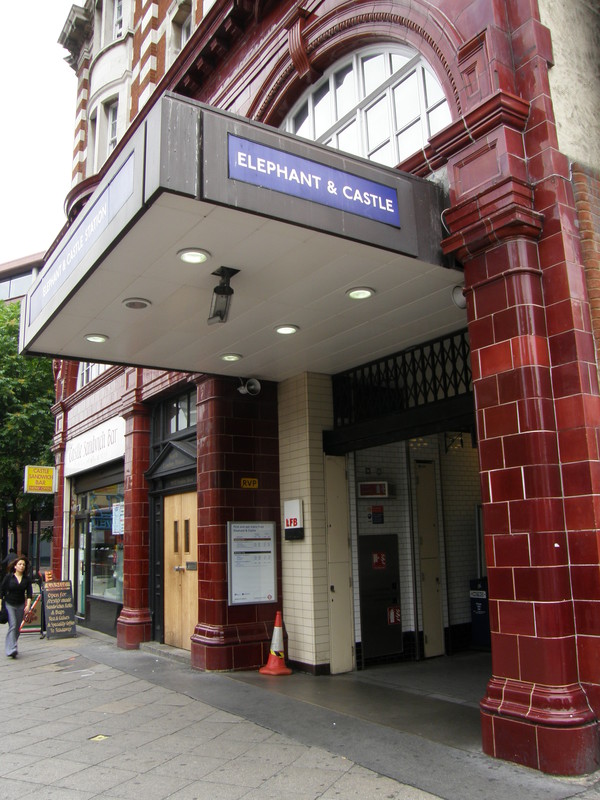
Dang. The weather has finally gone mental, and today's sweltering 30°C heat and high humidity did not go down well with me. I'm a grumpy bugger at the best of times, but when I can't move without dripping with sweat, I'm terrible. Luckily for me (but not so luckily for him) I was joined again today by my walking buddy Charlie, who put up with my personal storm cloud with the same tolerance he showed when we got stuck on Ko Samui in Thailand for two long weeks. Well done, Charlie; this walk would have really sucked if I'd been on my own.
The silver lining is that the overcast skies hid the sun, which would have pushed the temperatures up to unmanageable levels, and when the rain did come, it was light but with large drops, which is the best rain for walking. Fine mist is the worst, as it blows under your umbrella and into your camera lens, but heavy drops are cooling and not too intrusive. I guess I should be grateful, as London has been having a pretty good summer, at least when compared to the rest of the country; this is, at the moment, as good as it gets.
Elephant & Castle to Lambeth North
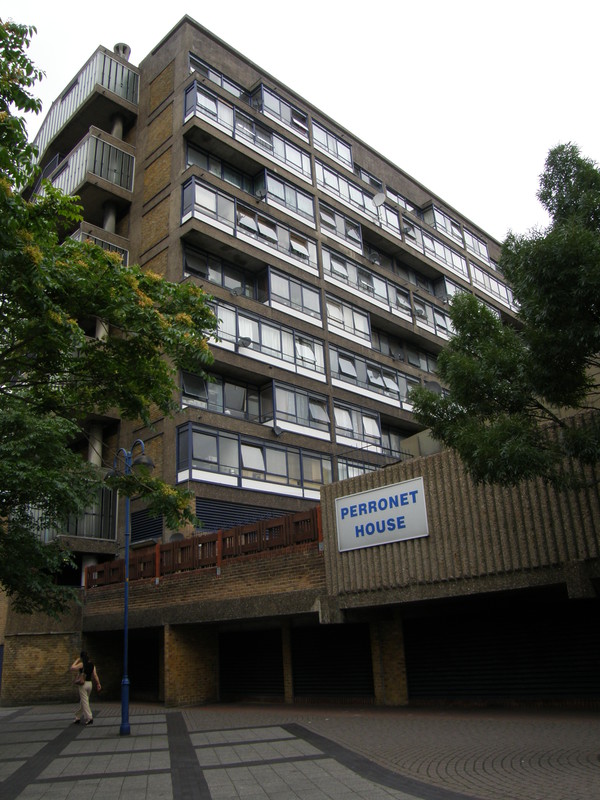
The Bakerloo line station at Elephant & Castle is a classic Leslie Green station, with the ox-blood red terracotta tiling I so enjoyed along the Northern line. However, the station exit has a glass lobby attached to the side of the building, sitting directly below three of the arched windows, which now have metal grilles instead of glass. It's an interesting mix of classic 1906 architecture with modern glass and steel construction, and it works well.
As I discovered on my Northern line walk from Kennington to Euston, Elephant and Castle is not the most beautiful part of London, but even those buildings that initially look uninviting can turn out to be hidden gems. Take Perronet House, which doesn't look its best in the grey of a Thursday morning; however, it won a commendation in the 1971 Good Design In Housing awards and has a number of fans, though it's difficult to appreciate the building's qualities from the outside. Looming on the other side of the road is the far less attractive London College of Communication, which is a hard building to love, and it's a relief to head away from the roundabout and turn left into Geraldine Mary Harmsworth Park, even though when we arrived it was clearly chucking out time for the local drunks, and we had to walk through a storm of slurred swearing, purple cans and security guards gently steering their charges onto the street with a palpable air of resignation.

The park is pleasant enough, but the real treat is the Imperial War Museum, which dominates the centre of the green. The museum moved to this location in 1936 after its original building in Crystal Palace burned down; the impressive building that now houses the museum was originally built in Southwark and housed the Bethlem Royal Hospital (also known as 'Bedlam') between 1815 and 1930, before being moved to the current location to house the war collection. It's fitting, in a strange way, that a museum about war should be housed in an old lunatic asylum...
Lambeth North station is a short walk along the pretty terraces of King Edward Walk and past the huge tower of The Perspective. This block of luxury flats incorporates Century House, which was the headquarters of MI6 from 1966 to 1995, after which the secret intelligence service moved to the current SIS Building at Vauxhall Cross. The station is another classic Leslie Green design, though it's looking a little more worn than some examples of his work. Then again, in 1941 a large bomb hit a hostel nearby and the shock wave damaged one of the southbound tunnels, killing 28 people who were sheltering there, so we should be grateful that Green's 1906 station is still here at all, scarred or not.
Lambeth North to Waterloo
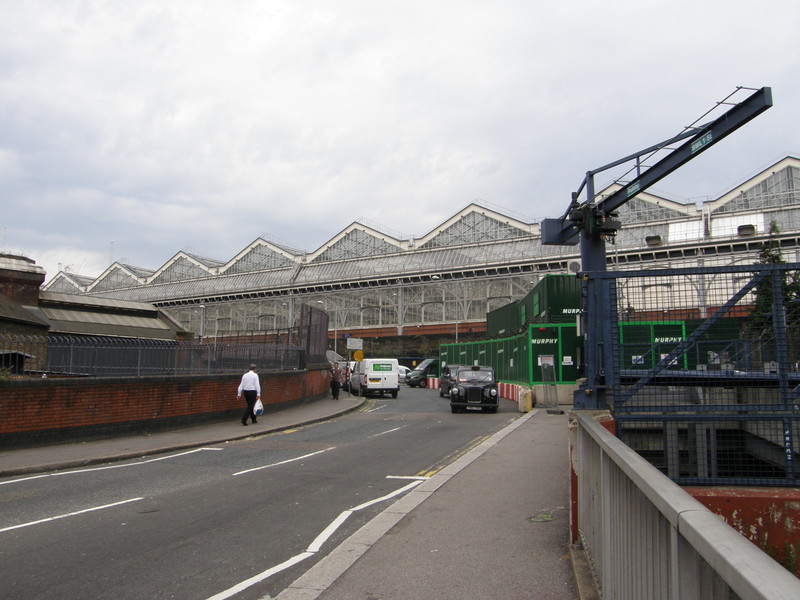
It's a fairly short walk along Baylis Road towards Waterloo, past some fairly sorry-looking social housing and the 1924 Duke of Sussex pub. However, things perk up at the junction with Spur Road, where a huge painting of a Cuban dancer lights up the wall above the Cubana bar, and cute shops and restaurants line Lower Marsh.
However, the most interesting thing round here – from a tubewalking perspective, anyway – is the blue crane just along Spur Road. This is the entrance to the Waterloo & City Line Depot, and here trains are winched in and out of the line, which has no direct rail connection to the outside world. Before the construction of Waterloo International terminal, an Armstrong lift to the north of the station was used to winch trains in and out of the line, but this lift was demolished in 1992 to make way for the Eurostar terminal and the crane to the south of the station is now the only way to get trains in and out of the Drain.
Waterloo station is just around the corner, and although there's a side entrance to the Tube station along Waterloo Road, it's worth continuing round the corner to see the Victory Arch. This is the main pedestrian entrance to the station, and it also serves as a memorial to train company staff who were killed in both world wars. The entrance to the Tube can be found just inside the arch, to the left.
Charing Cross to Piccadilly Circus
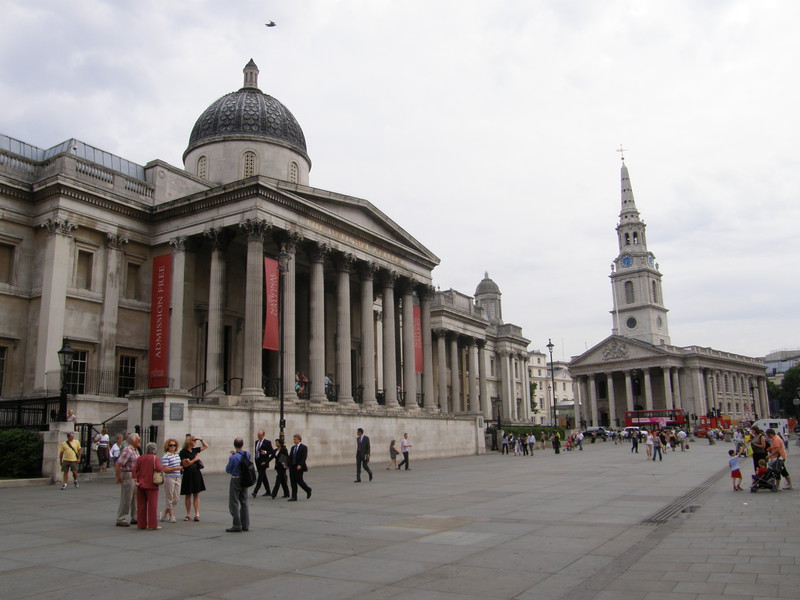
It's a short hop from Charing Cross station, past the scaffolding surrounding Eleanor's Cross, to Trafalgar Square, which hardly needs an introduction. The pedestrianisation of the road along the north of the square has completely changed the ambience, and it's a truly world-class attraction, with the National Gallery facing off with Nelson's Column while tourists snap away at the lions, the pigeons and the current incumbent of the fourth plinth (Thomas Schütte's multi-coloured glass construction, 'Model for a Hotel 2007').
Before heading up Haymarket to Piccadilly Circus, it's worth heading west along Pall Mall East, crossing the lights at the bottom of Haymarket, and turning right into the small but perfectly formed Royal Opera Arcade, which houses art galleries, book shops and, of course, the ubiquitous Chinese herbal remedy shop. Designed by John Nash and opened in 1818, this is Britain's original covered shopping mall, and it's a peaceful stroll amongst the chaos of central London.
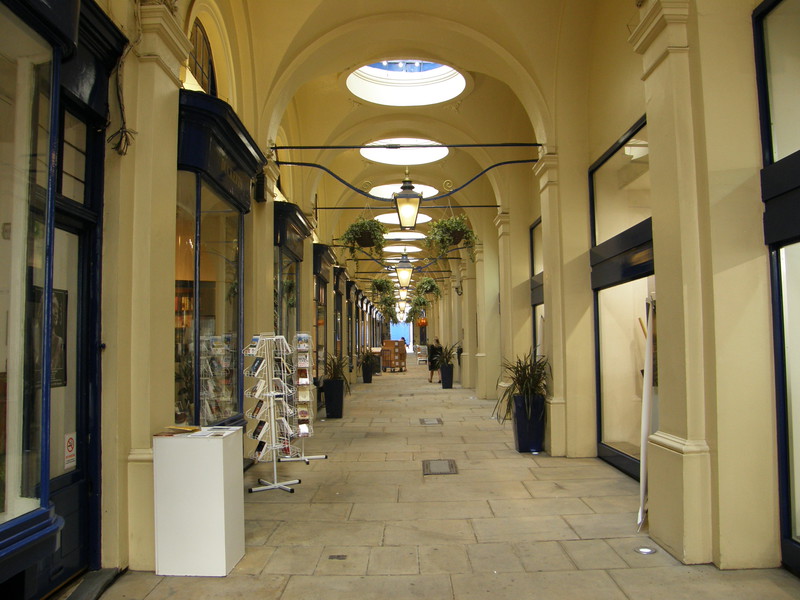
Back on Haymarket, you can't miss the six-column pedimented portico on the front of the Theatre Royal, and the impressive buildings continue all the way to Piccadilly Circus, which was built in 1819 to connect Regent Street to Piccadilly. There's the famous statue of Eros and the iconic video screens and neon signs on the north side, and more tourists than you can shake a red umbrella at. Piccadilly Circus is underneath all this, and the Bakerloo station was the first line to be brought through here, opening back in 1906 when the original Baker Street to Lambeth North section was opened. The original Leslie Green station was closed in 1929, once the station had been redeveloped below ground level in an amazing design by Charles Holden, and it was finally demolished in the 1980s, so there's nothing to see above ground apart from the subway entrances.
Piccadilly Circus to Oxford Circus
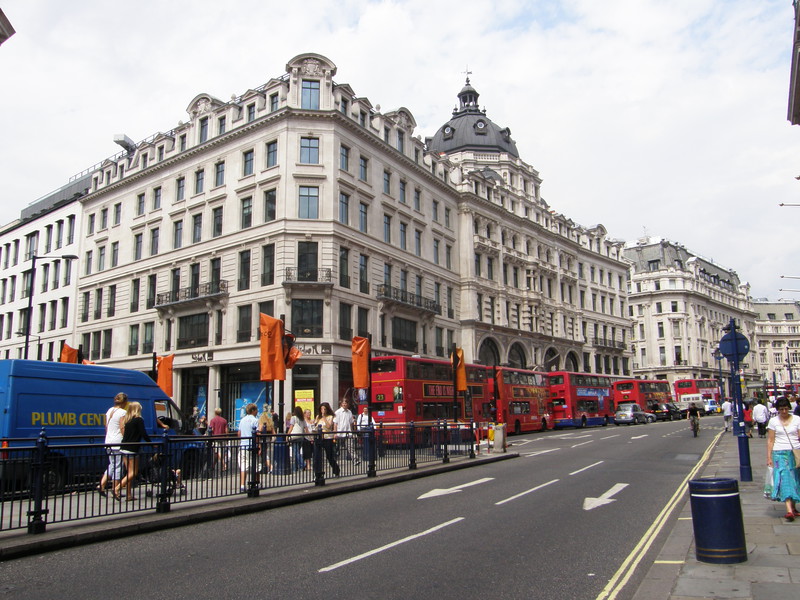
The main route from Piccadilly Circus to Oxford Circus is via Regent Street, but for a quieter alternative, it's worth taking Glasshouse Street and turning up Lower John Street into Golden Square... though, in a fit of confusion brought on by trying to eat a doughnut while map reading, we ended up walking along Warwick Street and missing the square entirely, which was a shame. Still, if you do manage to visit it, this historic part of London dates from the 1670s and was probably laid out by Sir Christopher Wren, and it's now home to a pleasant open area, some statues, and at number one, the headquarters of Virgin Radio.
Heading on past Golden Square, it's worth popping into Kingly Court at the top. This three-storey courtyard conversion is a delight if you're into fashion and shopping, and it's home to a cute square with a café, restaurant and a deeply trendy ambience. This isn't too surprising, considering that next door is Carnaby Street, arguably the most famous fashion street in London, but if clothes shopping makes you feel faint (which it does me), you can turn down Ganton Street and along Kingly Street to get to Regent Street, just past the Mock Tudor of Liberty, from where it's a short walk to Oxford Circus.
Oxford Circus station lives beneath the road junction, but unlike Piccadilly Circus, the original station buildings are still with us, on either side of Argyll Street. The ox-blood red terracotta building is Leslie Green's 1906 Bakerloo line building, and opposite it is Harry Bell Measures' 1900 Central line building. They're both used as exits these days; you have to shuffle your way down the stairwells on the circus to get into the station.
Oxford Circus to Regent's Park

Heading north away from the crowds along Regent Street, things soon start to calm down. The pavements here are wide and there are far fewer people, and by the time you reach the distinctive spire of All Souls Church, Oxford Street is a distant memory. Next to the church is the famous 1930s Broadcasting House, the rear of which is currently being redeveloped into BBC offices for the 21st century. Check out the sculpture on the front of the building, of Prospero and Ariel from Shakespeare's The Tempest; this is by Eric Gill, who also produced three reliefs for Charles Holden's building at 55 Broadway, the home of London Underground (which I visited on my District line walk from Victoria to Bow Road). Meanwhile, the Langham Hotel opposite completes a trio of great buildings, all clustered around Langham Place.
The impressive architecture continues up Portland Place, all the way to the most imposing of all, the delightful façades of Park Crescent. Dating from 1812, these Regency townhouses are on one of the earliest crescents designed by John Nash, and they have now been converted to offices, though the façades have been retained.
Regent's Park station is completely subterranean, the only signs of life being a couple of roundels on the south side of Marylebone Road, just north of the private garden in the middle of the crescent.
Regent's Park to Baker Street
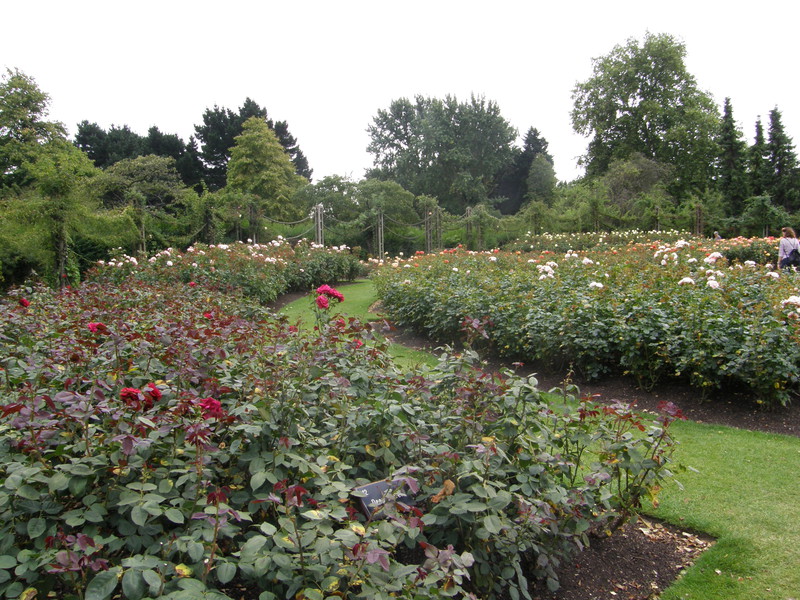
Not surprisingly, the biggest attraction near the station is Regent's Park, where we stopped for a bite to eat. Regent's Park has to be one of my favourite parks in London, and the section through Queen Mary Gardens in the centre, through to the bandstand opposite the boating lake, is one of my top lunchtime walks (I used to work just round the corner, and it's a great place for clearing your head after a morning staring into the cathode rays).
Of particular note is the view as you pass the ice cream shop on the western edge of the Inner Circle, as you come around the corner towards the bandstand; the view over the boating lake is beautifully offset by the minaret of the London Central Mosque, which might not be the most attractive tower on the planet, but its position on the opposite side of the lake gives the view from the path a wonderful balance, augmenting the original landscaping brilliantly. I just love it.
Back out in the traffic to the west of the park, Baker Street station is a short stroll along Baker Street, where there's a side entrance into the station, saving you a walk through the busy crowds of tourists on the corner with Marylebone Street.
Baker Street to Marylebone

It's a very short walk from Baker Street to Marylebone, the highlight being the impressive architecture surrounding Dorset Square. This is a classical Georgian square surrounded by terraces of four-storey town houses, and it originally formed part of the early 19th-century Portman Estate development; the buildings are pretty much unchanged from those days, with the brown of the London stock bricks mixing beautifully with the white stucco highlights.
Marylebone station is not far down Melcombe Place. It has to be one of the most attractive mainline stations, possibly because it's small enough to take in easily. It was one of the last of the mainline stations to open, dating from 1899, and its warm brick and cream stone give it an almost residential air, a far cry from the monumental stations of St Pancras and Paddington. The Underground station is beneath the mainline station, accessed by an entrance in the middle of the concourse, and it opened in 1907 as part of the extension west from Baker Street. The mainline station opened some years after the Metropolitan line had been built a short distance to the south, so Marylebone is pretty badly connected to the Tube network, having just the Bakerloo line to serve it. Still, it means it's not as insanely busy as stations like King's Cross, so there is an upside.
Marylebone to Edgware Road (Bakerloo)
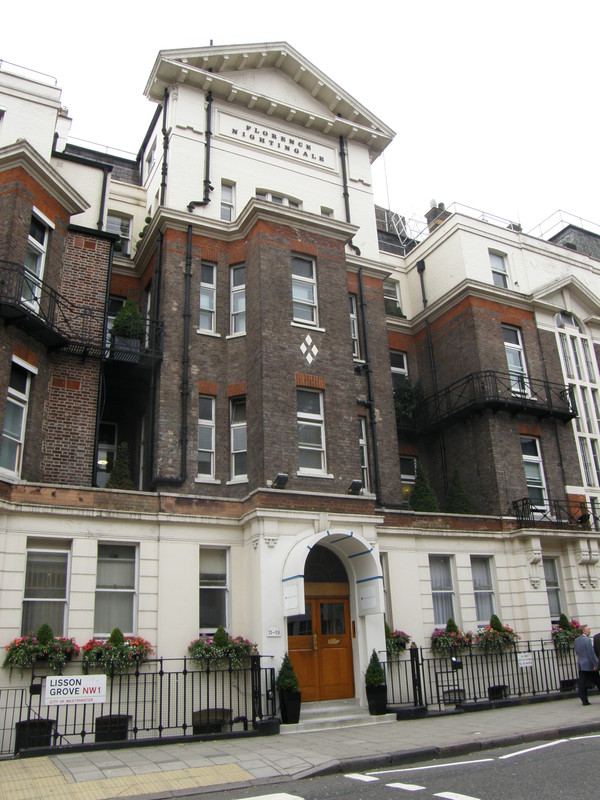
Continuing west, this time along Harewood Row and Bell Street, there's an interesting collection of buildings to wander past, from large churches to streets of neo-Georgian terraces. Florence Nightingale Hospital on Lisson Grove is an impressive building, and there are two architecturally interesting period pubs along here, the Constitution and the Brazen Head. Towards the eastern end of the road the shops start to appear, and there's a definite Arabian flavour to the shops, this being at the northern edge of the part of Edgware Road that's known as Little Cairo, Little Beirut and various other nicknames along the same theme.
Edgware Road (Bakerloo) station is just around the corner, almost beneath the monstrous flyover carrying the A40 out of London. This isn't the same Edgware Road station that serves the Metropolitan, Circle and District lines, which is a short walk away on the other side of the flyover; instead, this station is another Leslie Green design, dating from the 1907 extension west from Marylebone, when it became the terminus until the line was extended on to Paddington in 1913.
Edgware Road (Bakerloo) to Paddington

Opposite the station is the large tower of Paddington Green Police Station, the most important high security facility in the whole country. The above-ground station is normal enough, but there are 16 high-security cells beneath ground where serious terrorists are often brought. There are plans afoot to replace Paddington Green with a more secure and larger anti-terror jail, but for now this is anti-terrorism central.
Under the flyover and around the corner from the huge Hilton London Metropole is Praed Street (pronounced 'Prayed Street'). Lined with shops and pubs, and some rather worn but interesting Victorian architecture, Praed Street is also home to St Mary's Hospital, and in particular the second-storey laboratory where Sir Alexander Fleming discovered penicillin on . There's a blue plaque directly beneath the window where the discovery was made, just opposite Norfolk Place.
Paddington station is a little further along Praed Street. There's a small entrance to the Tube on the northern side of the street, just after the junction with London Street, but the main station entrance is on the south side of Praed Street, opposite the Hilton London Paddington Hotel, which was originally built between 1851 and 1854 as the Great Western Hotel. The Bakerloo line was opened through here on , beneath the main railway station; it's joined to the original Metropolitan line station via a corridor underneath Praed Street.
Paddington to Warwick Avenue
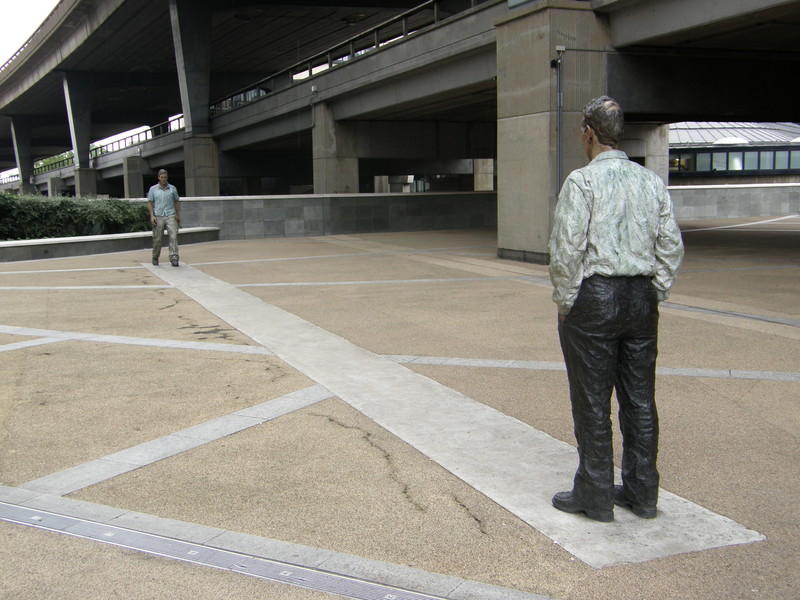
Passing the small entrance to the Tube and heading up London Street takes you along a sloping pathway to the back of Paddington station, which I first visited when trying to track down the Hammersmith & City station when walking from Hammersmith to Barking. Just past the back of the station is Paddington Basin, the small section of canal just south of Little Venice, which we'll come to in a minute. It's quite a surprise to find this little piece of canal heaven in the middle of a busy part of the city, but despite the peaceful canal location, Paddington Basin is a hive of redevelopment activity. To the west of the basin is Paddington Central, with two large office buildings and two residential blocks with over 200 apartments, all surrounding the pleasant Sheldon Square; there are lots of office developments along the basin to the south, which I visited when I walked through here on the Hammersmith & City line.
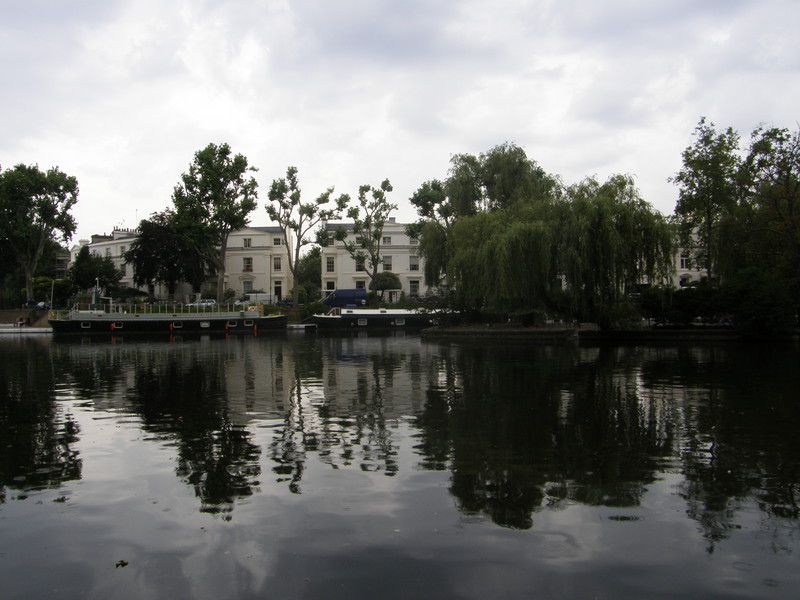
Just after Paddington Central, the canal creeps slowly under the huge double-decker A40 flyover before coming out in Little Venice, the name given to the residential area surrounding the junction of the Regent's Canal and the Grand Junction Canal. The poet Robert Browning lived round here from 1862 to 1887 and it is he who is believed to have coined the name, and the wide open expanse of water at the junction of the canals is known as Browning's Pool, after the poet.
Little Venice is a lovely area, as is the larger area of Maida Vale, of which Little Venice forms just a small part. Warwick Place is a great example of a backstreet in this largely Edwardian area, the row of white stucco terraces housing a great pub (the Warwick Castle), some exclusive shops and apartments you'd kill for. Out on the main street of Warwick Avenue, the impressive Edwardian mansion houses continue all the way to Warwick Avenue station, the only sign of which is the large brick ventilation shaft in the traffic island in the middle of the road. The whole station is below ground, and it was one of the first Tube stations to be built specifically with escalators in mind instead of lifts.
Warwick Avenue to Maida Vale
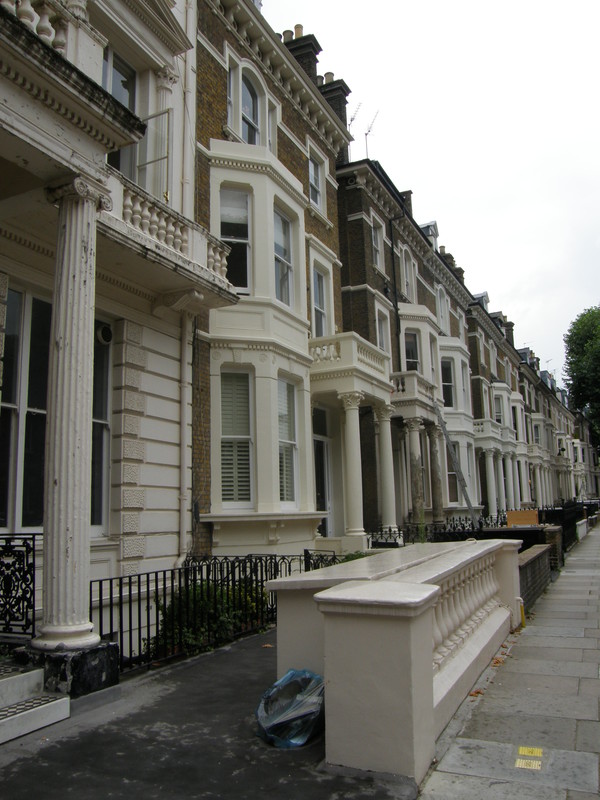
It's a short walk from Warwick Avenue to Maida Vale along Warrington Crescent and Randolph Avenue, but it's sweet. At the Colonnade Hotel on Warrington Crescent there's a blue plaque for Alan Turing – the father of modern computer science – who was born here on , when the hotel was a nursing home called Warrington Lodge. The white Edwardian townhouses along the crescent are delightful, and there's even a small block of five Mock Tudor houses halfway along the eastern side, just to make sure things aren't too monotonous.
Maida Vale station is another ox-blood red terracotta affair, but this time it's not Leslie Green, it's Stanley Heaps, who took over from Green after his early death in 1908. As his first independent commission, Heaps designed the Bakerloo stations at Paddington, Warwick Avenue, Maida Vale and Kilburn Park, but Maida Vale is the first above-ground example of this work, and it's great. The windows on the corner of Randolph Avenue are particularly fun, with signs saying 'Cigars' and 'Tobacco' in a throwback to times when we weren't quite so anti-smoking; meanwhile, the northern face of the building is a little hidden by scaffolding, but that doesn't detract from the distinctive design one little bit. The main difference between Heaps' stations and Green's designs is the number of storeys; Green had to build a second storey to house the lift mechanisms, but because Heaps was designing for escalators, he only needed one storey, but he incorporated the curved window designs into the single-story windows, echoing his predecessor's designs but bringing them bang up to date.
Maida Vale to Kilburn Park

The main event between Maida Vale and Kilburn Park is Paddington Recreation Ground, a large park that's mainly given over to sports. There are tennis courts, cricket nets, five-a-side football pitches, all-weather football pitches, a cricket pitch, a bowling green and even a normal bit of parkland in the centre. At this time of year it's a bit crazy with kids running around, blowing all the energy that would normally be soaked up by school, but it's a pleasant enough spot, even if my visit to the park toilets was somewhat spoilt by the sound of the attendant bollocking a group of ne'er-do-well boys whom he'd caught red handed doing something untoward in the urinals.
At the top end of the recreation ground, there's the first taste of a change in fortunes as the neighbourhood morphs from Maida Vale into southwest Kilburn. There's a hugely depressing council estate across Kilburn Park Road whose concrete high rises are probably best forgotten, and it's a similar story along Rudolph Road to Kilburn Park station. This is another single-storey Heaps station, and it's a particularly satisfying example of his early terracotta stations, with intricately laced windows and the station name clearly inscribed under the station eaves. There's a rather unsympathetic bright blue pharmacy under the middle arch which clashes horribly with the ox-blood red tiling, but that aside, this is a great station in a rather shabby part of town.
Kilburn Park to Queen's Park

If the last leg started to brush up against the realities of life in north London, this leg gets well and truly stuck in. The terraces along Chichester Road aren't too bad, but turning into Canterbury Terrace and Albert Road takes you into a housing estate that stretches all the way to Salusbury Road, the main road through Queen's Park. The estate isn't the worst I've seen, but it's a pretty depressing place, with no imagination in the architecture and a greyness that's only amplified by the overcast weather for which this country is famous. It's not a long walk to the main road, but it feels as if it is; this isn't a great part of town, to be honest.
Queen's Park station doesn't help much, as it's just plain ugly. The station was originally opened by the London and North Western Railway in 1879 on its line from London to Birmingham, and the Bakerloo line came through here in 1915. The modern station building completely fails to reflect any of this history, and has absolutely no character; the entrances are lined with steel that makes it look like you're entering a metal detector, and it's not a great place to dawdle.
Queen's Park to Kensal Green

Happily, Queen's Park is schizophrenic, because the second you pass the station, things pick up immediately, and the main drag of Salusbury Road is a pretty pleasant place. Clearly this is an example of being on the other side of the tracks, because it's the railway line that separates the nice part of Queen's Park from the not so nice, and from here to Kensal Green it's an absolute delight.
The main reason for the improvement is Queen's Park itself, a large 30-acre park in the middle of the suburbs that has obviously managed to spread its good vibes to the surrounding houses. Rows of well-kept and attractive terraced houses line the streets to the east of the park, and the park itself is a wide open space with trees surrounding the green, which proved handy as the heavens opened just as we arrived. There's a wood carving of Noah, a bandstand and a lovely little park café, and after the estates on the other side of the tracks, it's a considerable relief.

The pretty terraces continue to the west of the park, all the way along Keslake Road and Mortimer Road. This is a popular area with young professional couples and families with young children, and as we wandered along Mortimer Road, we came across Iggle Piggle, standing there on the side of the road. Clearly this was a photo opportunity not to be missed, so first Charlie and then I posed with the star of In the Night Garden, and as I smiled into the sun with Iggle Piggle standing proudly beside me, a mum and her toddler smiled out of the bay window, no doubt amused to see who was the latest person to be enticed into the Iggle Piggle trap outside. Being in touch with my inner child, I just said, 'Iggle Piggle!' and pointed gleefully at Mr Piggle, smiling my happy Night Garden smile while mum and child waved back, all of us caught up in the fun. There's nothing quite like a bit of regression, particularly after a long day's walk.
Kensal Green station is a combined Tube and railway station, and it's a bizarre building (though quite pleasant). It's a rectangular brick building with a black wooden roof and eaves, and it looks more like a modern public library or a school building than a railway station. Still, it's distinctive, so at least it scores heavily over Queen's Park.
Kensal Green to Willesden Junction
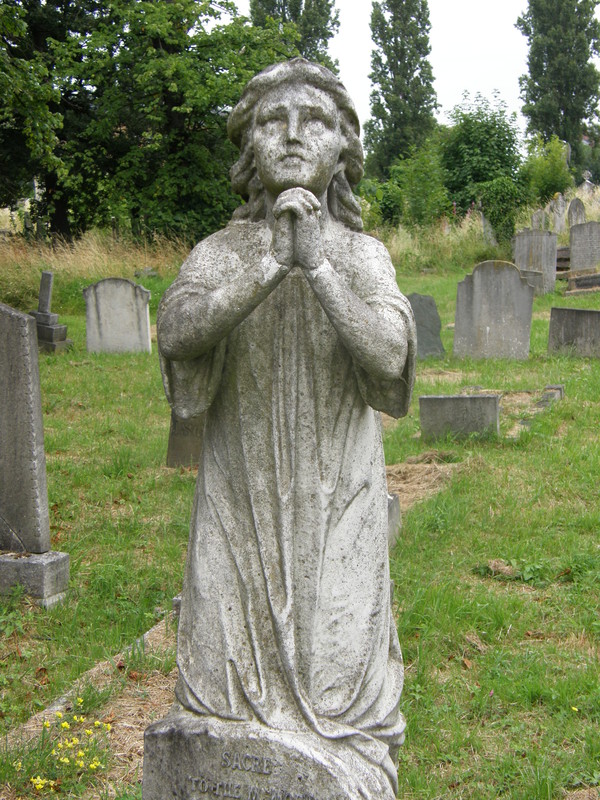
Just along the main road from Kensal Green station is Kensal Green Cemetery, which is well worth a quick visit. This was the first of the 'Magnificent Seven' cemeteries to be incorporated, back in 1832, and there are plenty of old graves to explore, as well as a large number of more modern ones. There are approximately 250,000 people buried here in 65,000 graves, including Isambard Kingdom Brunel and his father, Marc Isambard Brunel, who built the Thames Tunnel through which the East London line passes.
From the cemetery, things get a lot bleaker along Harrow Road, which isn't the most delightful place in the capital. There are some mid-Victorian terraces along the roadside that are pleasant enough, and off the main road you can peek along some quieter streets that show a bit of promise, but the main road is not a great place to hang out, and it's a relief to find a set of steps on the other side of the London Underground tracks that take you down to the back entrance to Willesden Junction station, and to the end of this long walk right through the centre of the capital.
Oh, and I'm now two-thirds of the way through my tubewalk, which has got to be worth celebrating. Not long now...